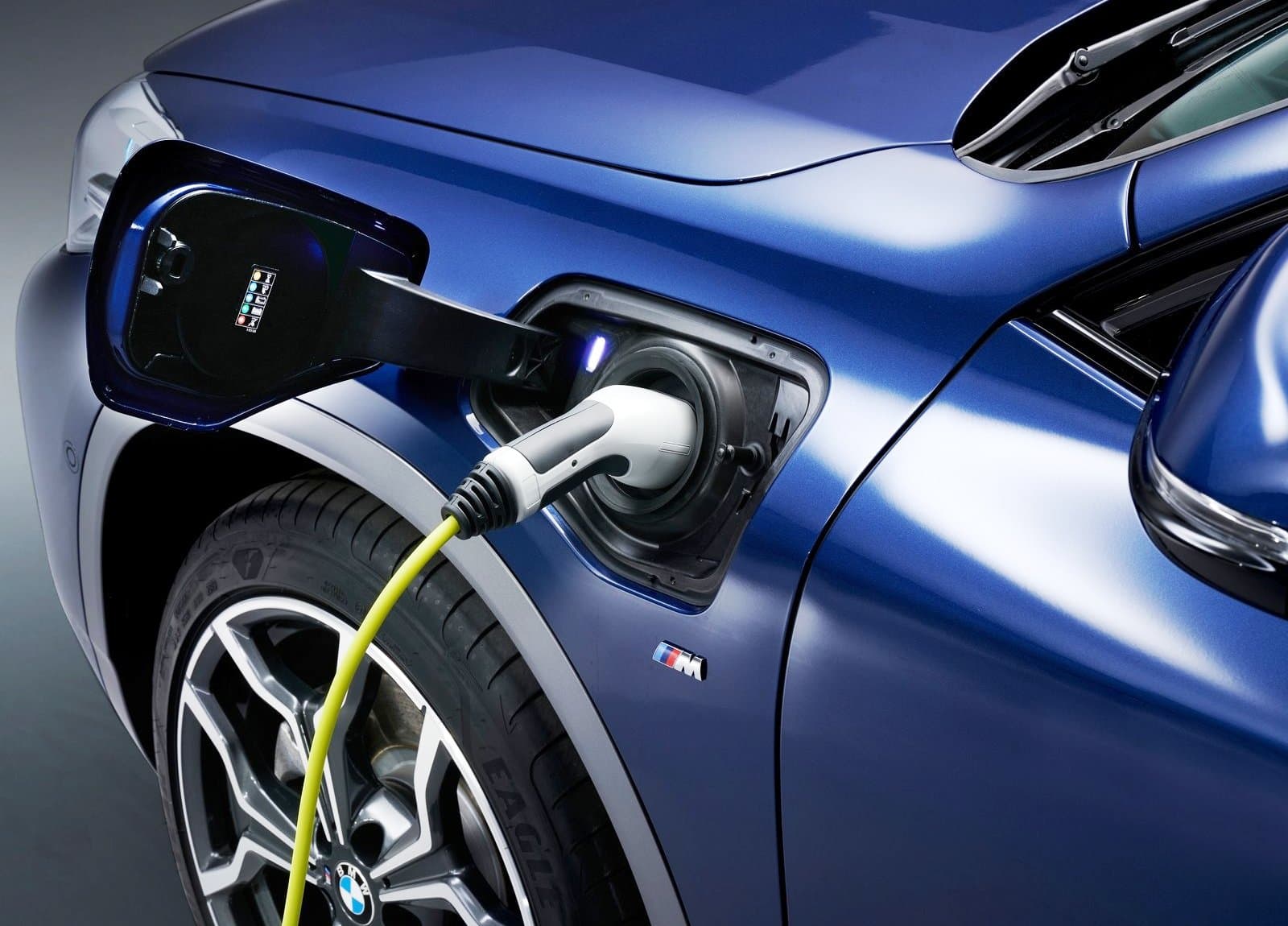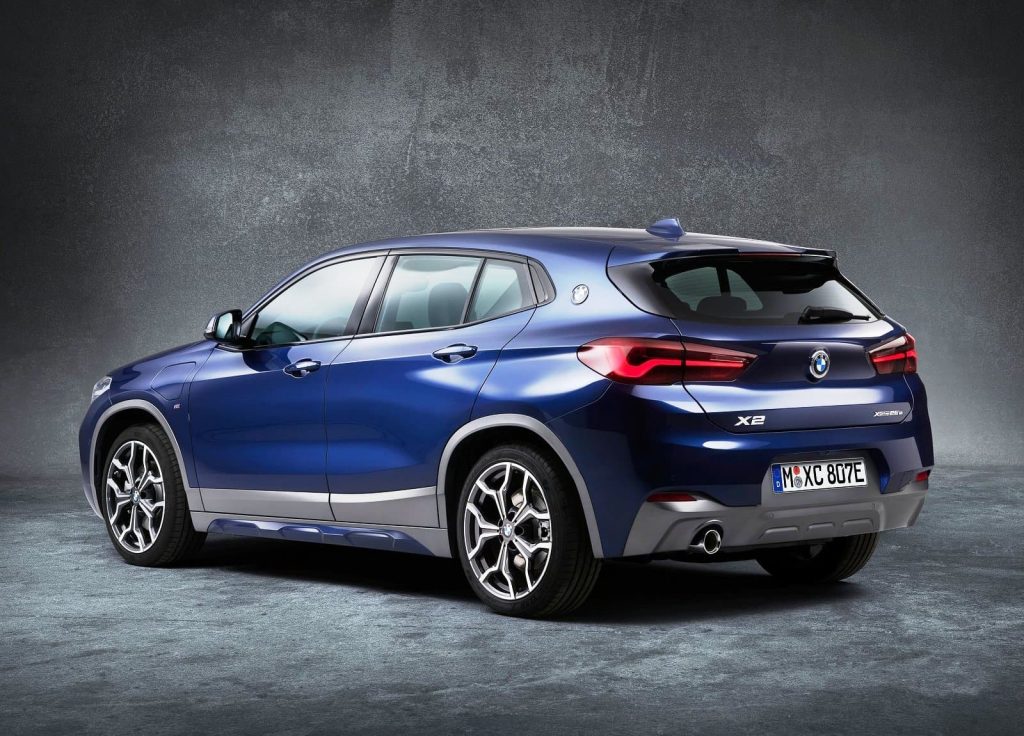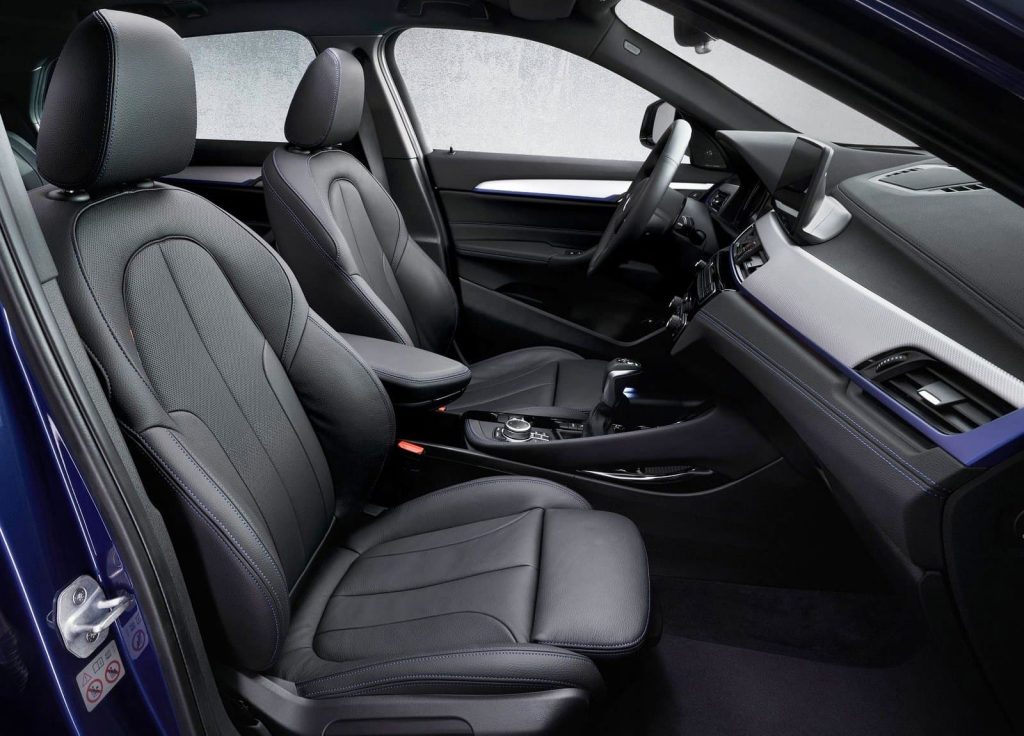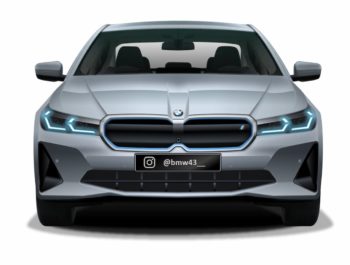BMW has unveiled its latest hybrid model, the BMW X2 xDrive25e that becomes the smallest vehicle in the range to feature the company’s common hybrid powertrain.
The BMW X2 Hybrid is powered by a three-cylinder petrol engine and an electric motor that make a combined power of 162 kW or 220 hp, peak torque of 385 Nm and can go from 0 to 100 km/h in 6.8 seconds, on to a top speed of 195 km/h. The 1.5-litre petrol engine makes 92 kW/125 hp and a peak torque of 220 Nm and the power is transferred to the front wheels through a 6-speed transmission. And the electric motor, which makes 70 kW/95 hp and a torque of 165 Nm, turns the rear wheels through a single-speed transmission, making the a hybrid four-wheel-drive system. The electric motor assists in immediate power delivery during starts and overtakes, apart from increasing efficiency over long drives.
The high voltage 10.0 kWh battery pack offers a range of 57 km in the all-electric mode and can be charged in 3.2 hours. The hybrid X2 gets three driving modes – Auto eDrive, Max eDrive and Save Battery. The Auto eDrive mode optimizes the two powertrains automatically, while in the Max eDrive mode, the car can reach speeds of up to 135 km/h in electric power alone, and the Save Battery mode helps to save the battery capacity for later use.
BMW has placed the battery beneath the rear seat without affecting the luggage space much. The boot space of 410 litres can be increased to 1,290 litres with the 40:20:40 rear folding seats. Compared to the regular ICE variants, the X2 Hybrid has a 10 mm lesser body height to optimise aerodynamics. The X2 xDrive25e comes with standard features including LED headlights, 17-inch alloy wheels and two-zone climate control.
Video courtesy: The Wheel Network
The X2 xDrive25e can be differentiated from its regular version by the xDrive25e badge on the right fender and a charge port located on the left fender.
Several media reports have said since 2017 that BMW would introduce the X2 in the Indian market as a competitor to the Range Rover Evoque.
| BMW X2 xDrive25e Specification | Unit | Value | |
| Length/width/height (unladen) | mm | 4360 / 1824 / 1512 | |
| Wheelbase | mm | 2670 | |
| Track, front/rear | mm | 1563 / 1562 | |
| Ground clearance | mm | 147 | |
| Turning circle | m | 11.4 | |
| Tank capacity | approx. ltr | 36 | |
| Engine oil | ltr | 4.25 | |
| Weight, unladen, to DIN/EU | kg | 1730 / 1805 | |
| Max. load to DIN | kg | 570 | |
| Max. permissible weight | kg | 2300 | |
| Max. axle load, front/rear | kg | 1120 / 1250 | |
| Max. trailer load, | kg | ||
| braked (12%)/unbraked | – / – | ||
| Max. roof load/towbar download | kg | 75 / – | |
| Luggage comp. capacity | ltr | 410 – 1290 | |
| Air resistance | cd x A | 0.29 x 2.38 | |
| Drive system | |||
| Drive concept | Full hybrid drive, Full hybrid drive, hybrid-specific xDrive all-wheel drive, | ||
| combustion engine driving the front wheels, electric motor driving | |||
| the rear wheels | |||
| System output | kW/hp | 162 / 220 | |
| System torque | Nm | 385 | |
| Combustion Engine | |||
| Config./No. of cyls./valves | in-line / 3 / 4 | ||
| Engine technology | BMW TwinPower Turbo technology: turbocharger, | ||
| High Precision Injection, VALVETRONIC fully variable valve timing, | |||
| Double-VANOS variable camshaft timing | |||
| Effective capacity | cm³ | 1499 | |
| Stroke/bore | mm | 94.6 / 82.0 | |
| Compression ratio | :1 | 11.0 | |
| Fuel | min RON 91 | ||
| Output | kW/hp | 92 / 125 | |
| at | rpm | 5000 – 5500 | |
| Torque | Nm | 220 | |
| at | rpm | 1500 – 3800 | |
| Electric motor | |||
| Motor technology | BMW eDrive technology: synchronous electric motor, generator function for energy recuperation for the high-voltage battery | ||
| Max output | kW/hp | 70 / 95 | |
| at | rpm | 8000 | |
| Torque | Nm | 165 | |
| at | rpm | 100 – 3900 | |
| High-voltage battery | |||
| Storage technology / installation | lithium-ion / underneath rear seat | ||
| Voltage | V | 295 | |
| Capacity (gross / net) | kWh | 10.0 / 8.8 | |
| Charging time for 100 % charge | 3.2 h at 3.7 kW (16 A / 230 V) | ||
| Driving Dynamics and Safety | |||
| Suspension, front | Single-joint spring strut axle in lightweight aluminium-steel construction | ||
| Suspension, rear | Multi-arm axle in lightweight steel construction with separate spring and | ||
| damper configuration | |||
| Brakes, front | Single-piston floating-calliper disc brakes vented | ||
| Brakes, rear | Single-piston floating-calliper disc brakes / vented | ||
| Driving stability systems | Standard: DSC incl. ABS, ASC and DTC (Dynamic Traction Control), DBC (Dynamic Brake Control), Dry Braking function, Fading Compensation, Start-Off Assistant, EDLC (Electrically Controlled Differential Lock Control), Performance Control | ||
| Safety equipment | Standard: airbags for driver and front passenger, side airbags for driver and front passenger, head airbags for front and rear seats, three-point inertia-reel seatbelts on all seats with belt latch tensioner and belt force limiter at the front seats, crash sensors, Tyre Pressure Indicator | ||
| Steering | Electromechanical rack-and-pinion power steering (EPS) with Servotronic function | ||
| Steering ratio, overall | :1 | 15.9 | |
| Tyres, front/rear | 225/55 R17 97W | ||
| Rims, front/rear | 7.5J x 17 light-alloy | ||
| Transmission | |||
| Type of gearbox | 6-speed Steptronic | ||
| Gear ratios | I | :1 | 4.459 |
| II | :1 | 2.508 | |
| III | :1 | 1.556 | |
| IV | :1 | 1.142 | |
| V | :1 | 0.851 | |
| VI | :1 | 0.672 | |
| R | :1 | 3.185 | |
| Final drive | :1 | 3.944 | |
| Performance | |||
| System power-to-weight ratio (DIN) | kg/kW | 10.7 | |
| Output per litre (comb. engine) | kW/l | 61.4 | |
| Acceleration | 0-100 km/h | s | 6.8 |
| Top speed | km/h | 195 | |
| Top speed electric | km/h | 135 | |
| Electric range | km | 57 | |
| BMW EfficientDynamics | |||
| BMW EfficientDynamics standard features | BMW eDrive technology, Brake Energy Regeneration with recuperation display, EPS (Electric Power Steering), hybrid-specific Auto Start Stop function, ECO PRO mode, BMW EfficientLightweight, optimised aerodynamic attributes, on-demand operation of ancillary units, map-controlled oil pump, electric a/c compressor, tyres with reduced rolling resistance | ||
| Fuel consumption EU cycle | |||
| Combined | ltr/100 km | 1.9 | |
| Power consumption comb. | kWh/100 km | 13.7 | |
| CO2 emissions from fuel | g/km | 43 | |
| Emission rating | Euro 6d | ||
| The values for fuel consumption, CO2 emission and energy consumption shown were determined in the standardized test cycle according to the European Regulation (EC) 715/2007 in the version applicable at the time of type approval. The figures refer to a vehicle with basic configuration in Germany and the range shown considers optional equipment and the different size of wheels and tires available on the selected model and may vary during the configuration. The values are already based on the test cycle according to the new WLTP regulation and are translated back into NEDC-equivalent values in order to allow a comparison between vehicles. With respect to these vehicles, for vehicle related taxes or other duties based (at least inter alia) on CO2-emissions the CO2 values may differ to the values stated here. |







![BMW i7 to arrive in 3 variants similar to iX SUV [Update]](https://electricvehicleweb.com/wp-content/uploads/2022/02/BMW-i7-front-350x219.jpg)
![BMW iX1 to feature dual & single motor variants [Update]](https://electricvehicleweb.com/wp-content/uploads/2020/03/BMW-X1-sketch-350x238.jpg)